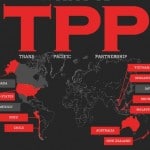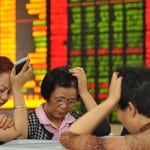US stock markets dropped dramatically on Friday afternoon, dragging overall global markets to their worst week of the year as concerns about the health of the Chinese economy rattled investors across the world.
All of the main US indices closed down more than 3% on Friday, the fourth consecutive day of falls. The Dow Jones Industrial Average closed down 531 points, or 3.1%, to 16,460 – the S&P 500 lost 3.2% to 1,971 and the Nasdaq closed down 3.5% to 4,706.
Most major markets around the world also suffered bruising losses as new data suggested Chinese factory activity had slowed to levels last seen in 2009 and added to investors’ fears about the country’s economy since Beijing devalued its currency last week.
US oil prices also crashed down to below $40 a barrel a one point, a level not seen since the financial crisis.
The dollar fell to a two-month low against the euro and added to speculation that the Federal Reserve may now not raise US interest rates next month, as had been widely expected by economists.
The Dow Jones index has lost about 10% from its record closing high on 19 May, mean it is entering a correction – a fall of at least 10% from a recent peak. The Dow has not fallen into correction territory since October 2011. Friday’s fall takes the Dow to its sharpest weekly decline in four years.
Stocks had already fallen sharply in Europe, Asia and Australia. In London, the FTSE 100 closed down 180 points, or 2.8%, to 6,187 – the lowest it has been this year and the biggest one-day fall since October 2014. The UK index closed down for nine straight sessions – its longest losing streak since 2011. The FTSE 100 has fallen by 5.6% this week, which equates to around £93bn ($146bn) being wiped off the value of the UK’s largest listed companies.
The Euro Stoxx 50, the continent’s 50 biggest companies, closed down 2.94% to 3,254.77 points and the pan-European FTSEurofirst 300 index fell 1.8% to 1,450.18 points, its lowest level since January and on course for its biggest weekly fall of the year. France’s CAC-40 declined 2.2% while Germany’s DAX fell 1.9%.
The global stock market falls came after Beijing released manufacturing data showing fresh evidence of problems at the heart of the Chinese economy. The preliminary Caixin China Manufacturing Purchasing Managers’ Index for August fell to a 77-month low. Following the report the Shanghai Composite Index dropped 4.3% to its lowest level since March.
“China has sent shockwaves through global markets and raised numerous questions on the outlook,” analysts at Societe Generale said. “To our minds, the gradual recovery taking shape in the advanced economies can weather what we expect will be a prolonged period of weaker growth in a number of the major emerging markets.”
David Madden, market analyst at IG, said: “China has been on a mission to keep up the illusion of a gradual slowdown, but dealers aren’t buying it anymore.”
Nigel Green, chief executive of financial consulting firm deVere Group, told Reuters: “There are many, and legitimate, contributing factors to the global economic slowdown narrative. These include China-related issues, such as the recent devaluation of its currency, the stock market’s boom and bust in recent months, and slower GDP growth.
“I believe that this volatility is likely to remain with us, at least until the end of the year … But for most long-term investors, fears of a near-term financial apocalypse are overdone.”
Connor Campbell, an analyst at Financials, predicted more lows to come. Oil and mining stocks were “drowning in losses” from the beginning of the day, he said.
Japan’s Nikkei average dropped almost 3% to six-week lows on Friday, while the Kopsi index in South Korea fell 1.92%.
The Australian stock market, which is heavily loaded with companies reliant on Chinese growth, closed down 1.4%. The benchmark ASX 200 has lost 8.5% so far this month – the steepest monthly fall since the 2008 global financial crisis.
The Australian dollar, considered a liquid proxy for China demand, slid to $0.7285 at one point and was last trading at $0.7330, a fall of 0.08%. The Malaysian ringgit hit a 17-year low and South Korea’s won fell again to take its weekly losses against the dollar to 1.8%.
“The perfect storm that has enveloped EM local markets looks set to continue,” Barclays analysts said in a note.
Crude oil prices, which have come under growing pressure from oversupply from the US, Russia and the Middle East, fell in response to concerns that lower manufacturing output in China will cut world demand. Brent crude closed at $45.30 a barrel, down from more than $60 in June and $115 little more than a year ago.
Lower oil prices are expected to boost growth in the US, Japan and the major importing nations in Europe in the longer term, but the initial impact has been felt on emerging economies that export oil and other basic commodities that have also slumped in price.
Oil’s run of weekly losses is its worst since 1986, when the Organization of the Petroleum Exporting Countries (Opec) ramped up production and sent it as low as $10 a barrel.













